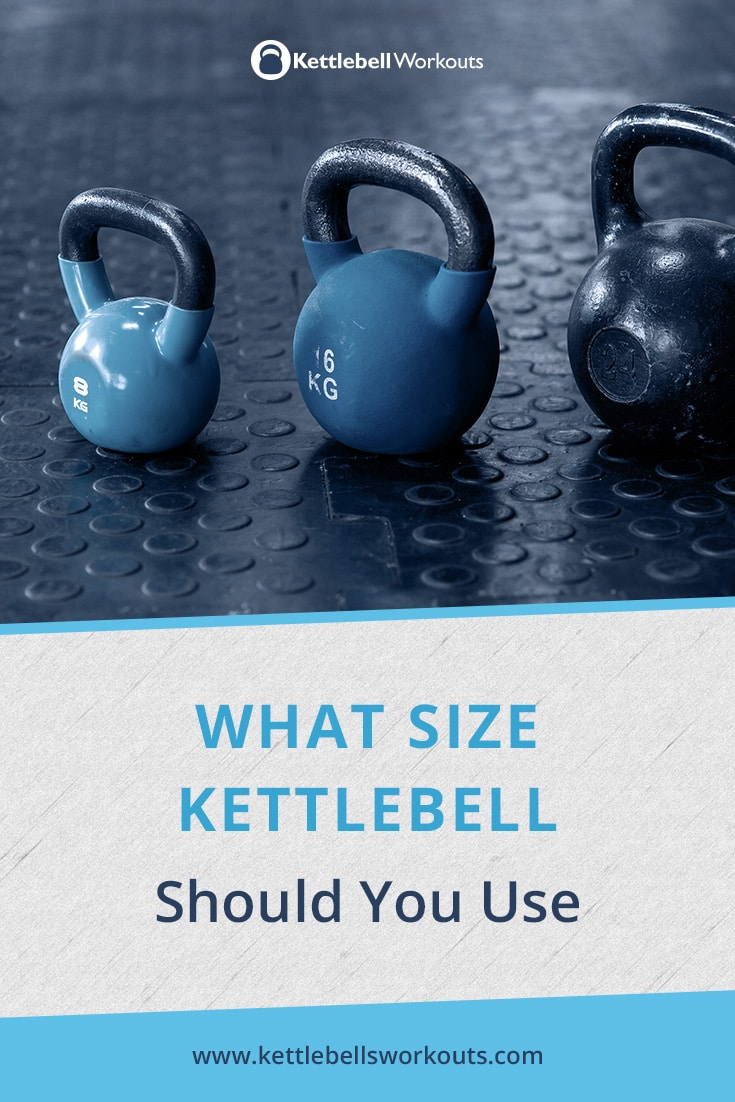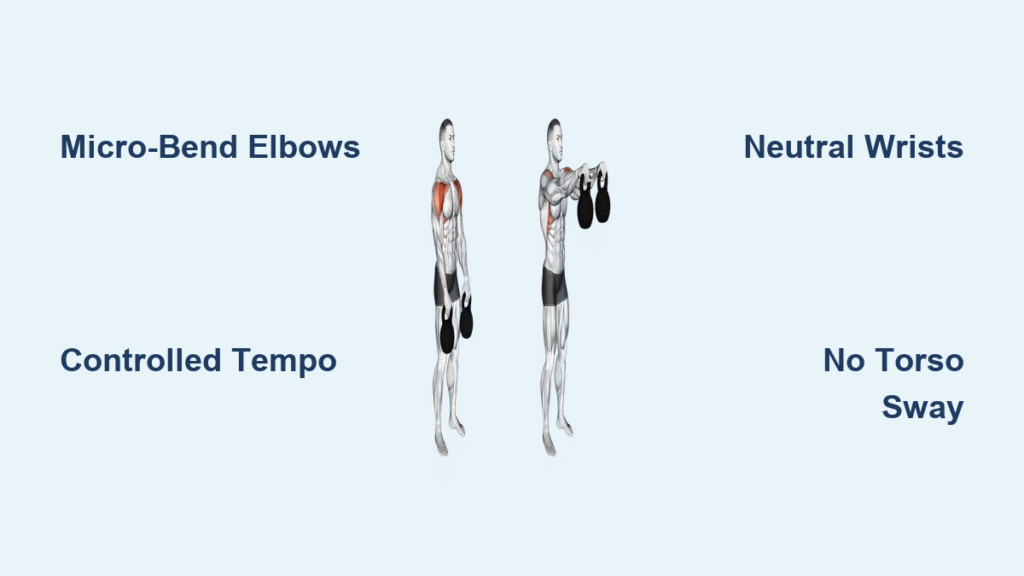That nagging shoulder twinge during overhead presses? You’re not alone. When your anterior deltoids lack endurance, every military press becomes a joint-threatening gamble. The kettlebell front raise solves this with targeted anterior deltoid activation while building the scapular stability your pressing movements desperately need. Unlike dumbbell variations, the kettlebell’s offset center of mass forces your stabilizers to work overtime—transforming a simple shoulder exercise into a full-body tension drill.
Most lifters butcher this movement by swinging the weight or locking elbows, turning potential shoulder sculpting into a dislocation waiting game. But when performed with millimeter precision, this exercise builds the muscular endurance that makes overhead presses feel effortless while protecting your rotator cuffs. You’ll discover exactly how to execute flawless reps, avoid the three most common form killers, and program this movement for maximum shoulder development without joint pain.
Perfect Starting Position Setup
Stand tall with feet hip-width apart, creating a rock-solid base that prevents lower-body cheating. Grasp a single kettlebell with both hands—this bilateral grip is non-negotiable for beginners—and let it hang naturally in front of your thighs. Your arms must extend fully with a critical micro-bend in the elbows; imagine softening your joints like slightly flexed knees during a squat.
The kettlebell should rest as low as possible near your waist without forcing your shoulders into uncomfortable extension. This deep starting position maximizes anterior deltoid stretch while keeping your scapulae in neutral alignment. Check your posture: shoulders pulled down and back (not shrugged), core gently engaged, and body forming a straight line from crown to heels. If you feel shoulder strain here, reset by rolling your shoulders down your back like sliding them into back pockets.
Why Your Starting Position Makes or Breaks Results
- Too high: Reduces range of motion, shifting work to traps instead of front delts
- Locked elbows: Transfers stress to shoulder joints instead of muscles
- Arched back: Engages lumbar spine, inviting disc compression during lifts
Controlled Concentric Lift Execution
Brace your core as if anticipating a light punch to the stomach—this abdominal engagement prevents lower-back compromise. Now slowly raise the kettlebell straight forward in a rigid line, keeping arms parallel to each other like railroad tracks. Your target: lift until arms become parallel to the floor with the kettlebell just above shoulder height.
Fight every instinct to cheat. No hip thrusts, no torso sway, no momentum—pure anterior deltoid strength only. The ascent should take 2 full seconds: feel the burn building across your front shoulders as you approach the top position. At peak contraction, pause for one full second while visualizing squeezing a pencil between your shoulder blades. This isometric hold maximizes muscle fiber recruitment where most lifters fail.
Precise Eccentric Lowering Technique
The descent matters more than the lift for shoulder health. Lower the kettlebell along the exact same path at a deliberate 2-second pace, maintaining that critical micro-bend in your elbows. Gravity should never control the weight—your anterior delts must resist the downward pull throughout.
Keep your core braced and torso rigid as the kettlebell returns to waist level. Never let it “drop” to reset; the continuous tension is what builds injury-resistant shoulders. Each complete repetition should take 5 seconds total (2 up, 1 pause, 2 down). If you can’t control the eccentric phase, the weight is too heavy—period.
Muscle Activation Breakdown

Your anterior deltoids are the undisputed primary movers here, driving every millimeter of the lift. But the real magic happens in the supporting cast: your middle trapezius and rhomboids lock your scapulae into retraction, while serratus anterior ensures proper upward rotation. Without this upper-back engagement, your shoulder joints would collapse under load.
Simultaneously, your core muscles create a stable pillar from pelvis to ribcage. Notice how your obliques and transverse abdominis fire to prevent torso sway? This full-body tension converts a simple shoulder exercise into a functional stability challenge that directly improves your overhead press mechanics.
Smart Equipment Selection Strategy

Choose a kettlebell weight allowing strict, momentum-free execution for your target reps. For beginners, 8-12kg (18-26lbs) typically works for endurance sets. Hypertrophy seekers might use 12-16kg (26-35lbs), but if you’re swinging the weight or leaning back, drop two sizes immediately.
Remember: the kettlebell’s offset center of mass demands lighter loads than dumbbells. That “light” bell that feels manageable at waist level becomes brutally heavy at shoulder height due to leverage changes. When in doubt, start with a 4kg (9lb) kettlebell just to master the groove.
Critical Form Mistakes to Eliminate
Elbow Lockout is the silent shoulder killer. Fully extended elbows transfer destructive force to joints instead of muscles. That micro-bend isn’t optional—it’s your joint insurance policy.
Torso Sway sabotages shoulder development. Any forward lean or backward arch shifts work to your lumbar spine. Fix this by placing your back against a wall during practice sets—zero movement allowed.
Diagonal Movement ruins anterior deltoid targeting. If the kettlebell drifts toward your face instead of moving straight forward, you’re engaging upper traps instead of front delts. Imagine lifting between narrow doorframes.
Non-Negotiable Safety Protocols
Never fully lock elbows at bottom or top positions—maintain that protective micro-bend throughout. Keep wrists neutral by letting the kettlebell hang naturally from your palms; aggressive gripping shifts strain to forearms.
Stop immediately if you feel sharp shoulder pain (distinct from muscle burn). This exercise should challenge muscles, not joints. If pain persists after stopping, consult a physical therapist before continuing.
Visual Position Checkpoints
Bottom Position: Kettlebell hangs at full arm length with shoulders down/back. Your body forms a straight line from head to heels—no forward lean.
Top Position: Arms parallel to floor, kettlebell slightly above shoulder height, core still braced. You should feel like holding a plank while arms extend forward. If your chest lifts or ribs flare, reset.
Programming for Your Goals

For shoulder endurance: 2-3 sets of 12-15 reps with 45-60 seconds rest. Use lighter weight (8-12kg) focusing on 5-second tempo control. Perform twice weekly after compound lifts.
For hypertrophy: 3-4 sets of 8-12 reps with 90-120 seconds rest. Choose weight making last 2 reps brutally challenging but form-perfect. Pair with overhead presses on shoulder days.
For pre-habilitation: 2 sets of 10-12 reps with very light weight (4-8kg), performed 3x weekly. Ideal as a warm-up before pressing movements to activate stabilizers.
Progression Roadmap
Start exclusively with bilateral raises (both hands on one kettlebell) for 4-6 weeks. Only when you can hit 15 perfect reps should you attempt alternating single-arm raises—which double the stability challenge.
Advanced lifters add tempo variations: 4-second eccentrics or 3-second isometric holds at the top. Never progress to heavier weights until you can execute 3 sets of 12 with eyes closed—yes, literally.
Strategic Integration Tips
Always pair kettlebell front raises with horizontal pulling movements like bent-over rows. This prevents anterior shoulder dominance that leads to “rounded shoulder” posture. Perform them after heavy presses but before lateral raises—your fatigued front delts will appreciate the pre-exhaust strategy.
For powerlifters, add 2 sets of 10 reps before bench press sessions. The scapular stability carryover will shock your pressing numbers. Olympic lifters should use lighter sets post-snatch practice to maintain shoulder health.
Mastering the kettlebell front raise isn’t about moving weight—it’s about moving correctly. That 5-second tempo, micro-bent elbows, and rigid torso transform this from a joint-threatening swing into your most valuable shoulder-building tool. Start light this week: 2 sets of 10 with a kettlebell you could easily lift overhead. Feel the anterior deltoid burn without shoulder strain? You’ve unlocked the gateway to pain-free pressing strength. Pair this with daily band pull-aparts, and within 6 weeks, you’ll notice shoulders that look carved while overhead presses feel effortless. Your rotator cuffs will thank you for decades.




